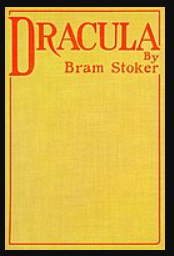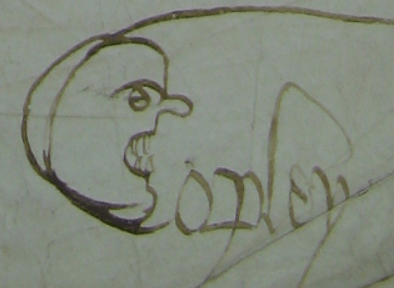The picturesque town of Whitby is, of course, inextricably linked with one famous danger to humanity…
Yes, him …
OK, that was gratuitous vampire-inclusion. It is, in fact, a less well-known, and possibly less fictional, Whitby resident and dealer of death I will be considering here. A certain Richard Cowper was in the area in the late 15th century, and, apparently, he had murder in mind.
According to an entry in the King’s Bench Indictment File for Michaelmas 1478 (KB 9/349 m. 77), Richard Cowper, a monk, was suspected of having mixed an unspecified poison in the wine he gave to William Colson, abbot of the (Benedictine) abbey of SS Peter and Hild at Whitby, and others (another monk, John Langthawe, and John [Mason], Thonas Gateshede and Richard Ledys – none of whom were specifically said to be monks). The deed was said to have been done on 20th September 1477, at a time when, so the entry is careful to specify, the imbibers were in good physical health. Not for long, however. They were unwell (languebant) from 20th September until 6th October, at which point, one of them (Richard Ledys) died. We hear no more of the others. The abbot at least survived, as he is reported dying only in 1499 – and so it is safe to say that the cause would not have been the questionable beverage supplied by R. Cowper.
The indictment is interesting – and a little odd – in its inclusion of the whole story involving he group of victims, when only one of them died. It is relevant to my research on petty treason, though, as ever, it raises just as many questions as it answers.
The relationship between the abbot and Cowper is worth considering. Cowper is called a ‘fellow-monk’ (comonachus) of the abbot, though the abbot is also called his master (magister) and the offence is said to have been committed proditorie as well as falsely and feloniously. Proditorie is generally a word seen in treason/’petty treason’ contexts. Leaving aside the fact that the abbot did not die, an offence against one’s abbot could certainly be brought under the heading of ‘petty treason’, in that it could be thought of as either a ‘servant v. master’ offence, or a ‘person owing obedience v. prelate’ case, under the categories in the 1352 Statute of Treasons. True, the use of ‘comonachus’ muddies the waters a little, but hierarchy is emphasised with the use of ‘master’ to describe Cowper’s relationship with the abbot. The relationship with Richard Ledys, the poor fellow who did die, cannot, however, really be seen as a ‘petty treason’ relationship. It is not clear that Richard Ledys was a monk at all, but, if he was, he was not the abbot, so that the relationship looks more horizontal than vertical. Was the proditorie justified on a sort of ‘transferred intention’ basis – i.e. that Cowper intended to kill the abbot, and that intention was in the nature of treason, and applied over to the death of another person? Seems a little far-fetched. Could it be that it was being suggested that poisoning was something which made the offence petty treason? Certainly, poisoning was, in the next century, singled out as especially heinous (st. 22 Hen. VIII, c. 9), but I am not aware of any such doctrine existing in the fifteenth century. So – a bit mysterious.
The alleged and apparently unsuccessful attempt to kill the abbot and the others who drank the wine, apart from poor old Richard Ledys, is also described as having been committed proditorie. This might be even more interesting. One of the intriguing aspects of petty treason is its position in between ‘normal’ homicide and ‘high’ treason. Generally speaking, with the exception of the penalties, it is treated as being closer to homicide than to treason. Here, though, it appears that an attempt is being assimilated to the completed act – something which probably would not have been the case in contemporary homicide but would certainly have been the case in ‘high’ treason (generally, plots and attempts at treason did not succeed …).
According to the description of Whitby Abbey in the relevant Victoria County History volume, its history was ‘devoid of exceptional interest or importance’. Well – not to legal historians, I would say!
Iechyd da!
GS
31/5/2022
Wine image – Photo by Max Tutak on Unsplash
Book image c/o Wikimedia Commons






